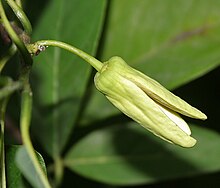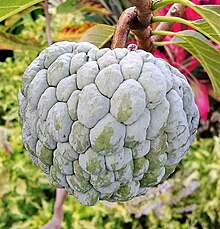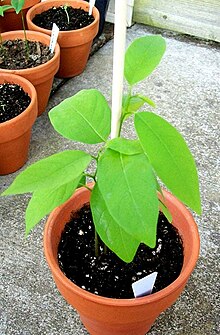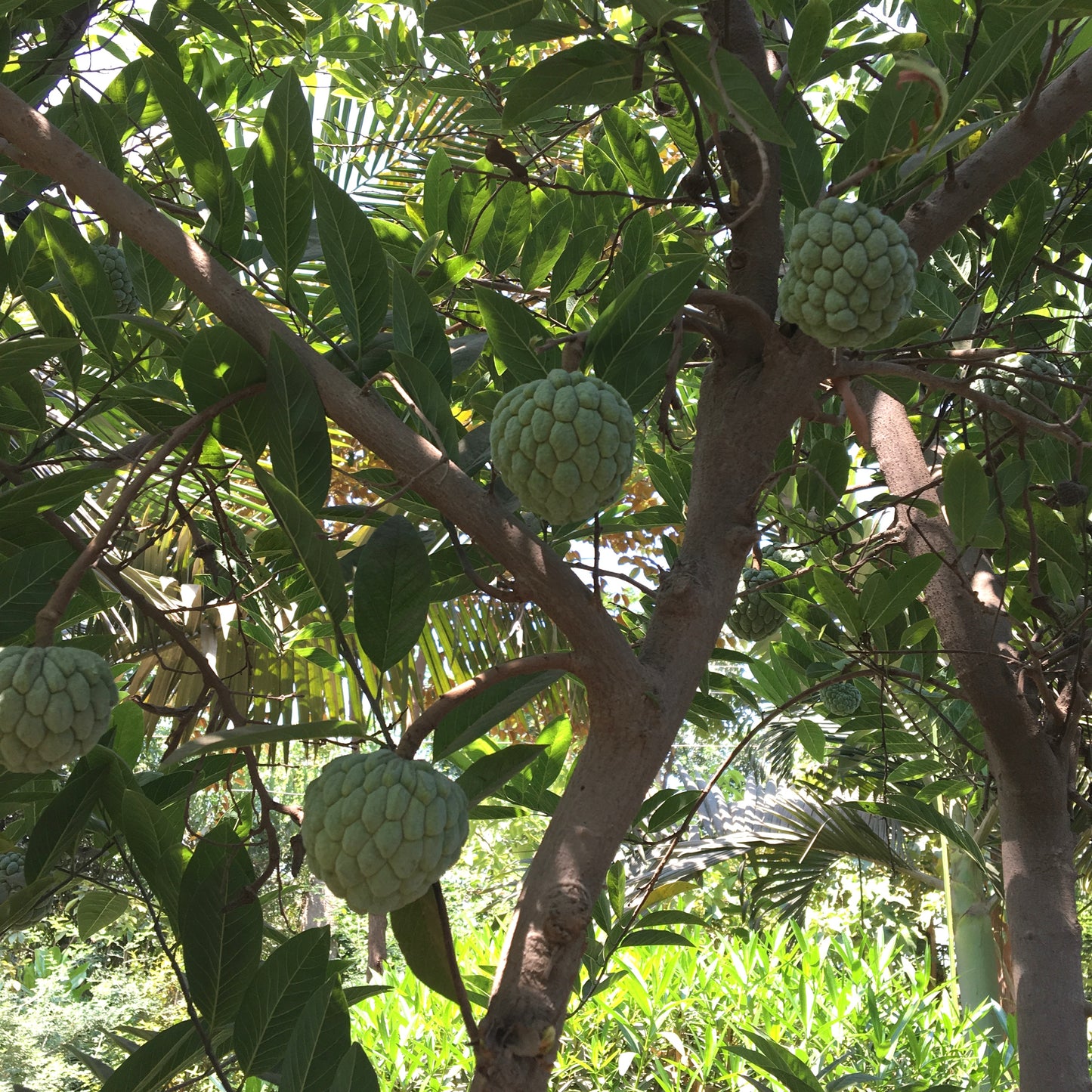-
ANNONA SQUAMOSA (SUGAR APPLE)
ANNONA SQUAMOSA (SUGAR APPLE)
Couldn't load pickup availability
MINIMUM TEMPERATURE SUPPORTED +3°C
(DATA REFERS TO AN ADULT PLANT IN OPTIMAL HUMIDITY AND SOIL CONDITIONS)
From Wikipedia, the free encyclopedia.
Annona squamosa L. it's a small one tree or shrub well branched of family from the Annonaceae [2] which produces fruits called sugar-apple or sweetsops .
Tolerates the tropical climate of the plains better than his relatives Annona reticulata And Annona cherimola [3] (whose fruits often share the same name) helping to make it the most widely cultivated of these species. [4] Annona squamosa is a small, semi-(or late) deciduous , [5] large shrub or small tree 3.0 tall [6] at 8 meters [5] similar to Annona muricata . [7]
Description
Stem
It has branches with light brown bark and visible leaf scars. The inner bark is light yellow and slightly bitter. The twigs turn brown with light brown spots (lenticels - small, oval, rounded spots on the stem or branch, from which underlying tissues or roots may protrude). [3]
Leaves

Thin, simple and alternate leaves [7] they occur individually, [3] 5 to 17 centimeters long and 2 [5] wide to 6 centimeters [3] , rounded at the base and pointed (oblong-lanceolate tip) [5] . Pale green on both surfaces and mostly glabrous [3] with fine hairs on the underside when young [6] . The sides are sometimes slightly unequal and the edges toothless, apparently hairy when young [3] [7] .
The leaf stems have a length ranging from 0.4 to 2.2 centimeters [5] , are green and poorly pubescent. [3]
Flowers

Flowers: Alone or in small lateral groups of 2–4, about 2.5cm long, [5] greenish-yellow on a hairy, slender stem, [3] 2.0 centimeters long. [5] Three green external petals, purplish at the base, oblong, from 1.6 to 2.5 and from 0.6 to 0.75 centimeters, with three tiny or absent internal petals. [5] [6] Very numerous, crowded, white stamens less than 1.6 centimeters long with light green ovary. Pistils white, crowded on the upper axis. Each pistil forms a separate tubercle (small rounded warty bump) [3]
Flowering occurs between spring and early summer [5] and The flowers are pollinated by beetles nitidulids . [8]
Fruits

The fruit of A. squamosa It has a whitish and sweet pulp and is common in the markets tropical . [5]
Aggregate, soft fruits form from the numerous pistils of a flower [3] that widens [5] and ripens into fruits that are distinct from the fruits of other Annona species [3] (and greater gods raspberries giants).
Round or heart-shaped [3] greenish yellow, when ripe it is pendulous [5] on a thickened stem, and has a diameter ranging from 5.0 [3] [6] to 10.0 cm. [5] [7] with many round bumps [3] and covered with a dusty bloom. The fruits are made up of vaguely coherent or almost free carpels (the matured pistils). [6]
The pulp is white in color with yellow reflections, [6] edible and sweetly aromatic. Each carpel contains an oblong, shiny and smooth seed, [3] dark brown, [6] long between 1.3 and 1.6 cm. [3]
Ecology
In Philippines , the fruit is commonly eaten by the Filipino fruit bat ( kabag or kabog ), which then spreads the seeds from island to island.
AND nurse plant from the larvae of the butterfly Graphium agamemnon ( Papilionidae ). [9]
Distribution and habitat
Annona squamosa it is native to the tropical Americas and the West Indies, but the exact origin is not known. Today it is the most widely cultivated of all " Annona " species, being grown for its fruit throughout the tropics and in warmer subtropical regions, such as Indonesia , Thailand And Taiwan and was introduced into Asia of the South before 1590. It is naturalized up to the south of Florida in the United States of America and south of Bahia in Brazil , and it is one invasive species in some areas. [3] [4] [7]
Cultivation

Like most species of Annona , requires a tropical or subtropical climate with summer temperatures from 25° to 41° and average winter temperatures above 15°. It is sensitive to cold and frost, is defoliated below 10° and dies at temperatures a couple of degrees below zero. It is moderately drought tolerant, requiring at least 700 mm. of annual rainfall and does not bear fruit well during drought.
It grows from sea level to about 2,000 meters and thrives in hot, dry climates, differing in its tolerance of lowland tropical climates from many of the other fruit trees in the fruit family. Annona .
It is a rather prolific plant and produces fruit in less than two or three years. A five-year-old tree can produce up to fifty fruits. Poor fruit production has been reported in Florida because there are few natural pollinators (bees have difficulty penetrating tightly closed female flowers); however, hand pollination with a natural fiber brush is effective for increasing yield. Natural pollinators include family beetles Nitidulidae , Staphylinidae , Chrysomelidae , Curculionidae And Scarabeidae . [4] [10]
Uses
In traditional Indian, Thai and American medicine, the leaves are used, in the form of in decoction , to treat dysentery And urinary tract infection . [11] In traditional Indian medicine, they are also crushed and applied to wounds. [11] In Mexico, the leaves are rubbed on floors and placed in chicken coops to repel lice. [4]
RICHIEDI FOTO
RICHIEDI FOTO
Scrivimi su WhatsApp al +393472475878 per ricevere foto piante in vendita




